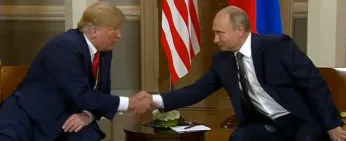
The Central Bank readies another rate hike
There is little doubt that the central bank is gearing up to raise its key interest rate in its next meeting on Friday. Currently set at 19%, it’s expected to be hiked to 20-21% — matching or surpassing the emergency interest rate introduced days after Russia invaded Ukraine. This time round, it could stay in place for a much longer period of time.
- The bank’s own economic statistics, published last week, outline why a rate hike is likely. First, Russian companies are still actively taking on new loans. Corporate lending is important because it generates more aggregate nominal demand in the economy than retail lending. In September, the portfolio of corporate loans was up 2%, or 1.6 trillion rubles ($16.7 billion) from a month earlier. So far this year the level of outstanding corporate borrowing has grown 14.5%, despite high borrowing costs.
- While the central bank’s rates are high, businesses prefer to take on loans at a floating rate, not a fixed one. In the corporate lending sector, the share of floating rate loans has exceeded fixed rate offers for several months (53.1% against 48.5% of new issues). This, however, is a vicious circle. If the rate is not fixed, it allows for a much more intense increase in the debt burden as companies still take on loans in the hope of lower rates in the future. However, in the end it actually leads to greater increases in both interest rates and the debt burden, explainedeconomist Yegor Susin.
- Secondly, high demand, which is not being matched by increased production or imports, continues to contribute to rising prices. In September, seasonally adjusted inflation was up from 7.5% to 9.8%. There is a high risk of continued rapid price increases for food. The projected harvest for this year is low due to frosts in May and a spring drought and a quota on duty-free chicken imports expires this year.
- Inflationary expectations, which the Central Bank usually monitors closely, are also on the rise. The latest study this month saw them jumpfrom 12.5% to 13.4% — the highest level since December.
- It’s unlikely that this week’s rate hike will be the end of the story. In the coming months the Central Bank will have to further tighten its monetary policy. Among the pro-inflationary factors Russia faces, the bank singled out the increase in the 2024 budget deficit to 1.7% GDP ($34.4 billion), a 75-80% increase in the recycling fee for new cars, which led to increased demand for car purchases, and a rise in communal service fees of 11.9% next year, more than double the initially planned 5.7%.
- Rates were raised to 20% during an emergency hike in February 2022, after Russia invaded Ukraine and the West imposed sweeping sanctions. Friday’s decision could take them even higher.
Why the world should care:
Russia’s attack on Ukraine has led to serious disbalances in the economy, forcing the Central Bank to try to use tighter and tighter monetary policy to fight back. But in the long term, high interest rates increase the likelihood of a recession, which would have consequences for tens of millions of ordinary Russians.





